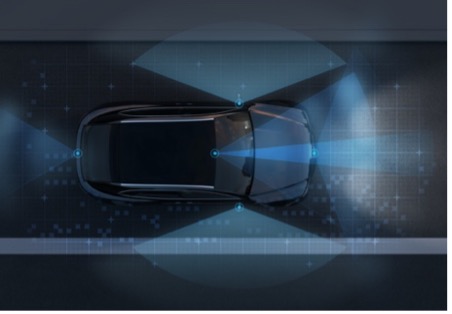Road Lane/Edge Marker for Automotive Radars
TECHNOLOGY NUMBER: 2023-040

OVERVIEW
Radar-reflective road markings for enhanced autonomous vehicle navigation
- Makes lane markings visible to vehicle radars; enhances autonomous driving reliability
- Applies to autonomous driving, smart highways, traffic management systems
BACKGROUND
Autonomous vehicles rely heavily on cameras to track road markings for lane keeping, which becomes challenging or impossible without clear markings. The reliability of autonomous vehicles thus diminishes in adverse weather conditions or on poorly marked roads. Current road paint is not detectable by radar, limiting the effectiveness of radar systems in supporting navigation. Historical approaches have focused almost exclusively on optical detection, which lacks robustness in diverse conditions. As autonomous driving technology advances, there's a critical need to enhance the infrastructure to interact seamlessly with radar systems, ensuring reliable vehicle operation even when visual cues are insufficient. Addressing this issue is essential for the widespread adoption and safety of autonomous vehicles.
INNOVATION
Researchers have created an invention that introduces a radar-reflective road marking that is visible to radars operating in the W-band (77 GHz). The design features low-cost, low-profile radar reflector arrays measuring 3cm x 3cm with a height of 200-250 micrometers. These reflectors can be mass-produced using standard PCB technology or optical lithography on a flexible membrane, allowing them to be embedded into lane stickers easily. The arrays can be coded to inform the radar of different lane types, such as dashed, continuous, or double lines. This innovation substantially improves radar-based lane detection in autonomous vehicles, facilitating autonomous navigation in challenging visual environments. Potential applications include smart highways, traffic management systems, and enhancing the safety and reliability of autonomous driving systems.
ADDITIONAL INFORMATION
REFERENCES
T. J. Douglas and K. Sarabandi, "Low-Profile Passive Reflector for Radar Detection of Road Markings," 2022 IEEE International Symposium on Antennas and Propagation and USNC-URSI Radio Science Meeting (AP-S/URSI), Denver, CO, USA, 2022, pp. 770-771, doi: 10.1109/AP-S/USNC-URSI47032.2022.9886933
INTELLECTUAL PROPERTY
US20240186714 "Low-Profile Passive Reflectors For Radar Detection Of Road Markings"